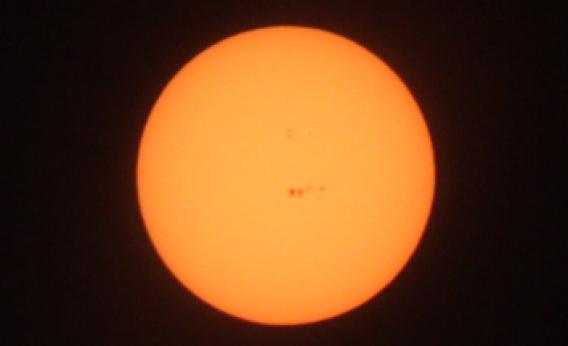Create a free profile to get unlimited access to exclusive videos, sweepstakes, and more!
A Monster Sunspot Comes Around for Seconds

The Sunâs getting feisty again, and looking at the picture above, you can see why.
That ridiculously huge cluster of sunspots is called Active Region 1967, and the size is staggering: The entire complex is easily 200,000 kilometers (125,000 miles) across. That one spot on the left is more than big enough to swallow the Earth without having it touch the sides.
This cluster is actually the same one I wrote about a month ago (then called AR1944); itâs actually survived long enough to go all the way around the Sun and come back into view. Thatâs an uncommon occurrence. Using images from NASAâs Solar Dynamics Observatory, I made a video that shows the Sun over the course of a week (with images taken every 15 minutes), first in visible light to show the spot, then in ultraviolet to show the magnetic activity of this monster.
I suggest watching the video again, this time looking at some of the other spots on the Sun; you can see them form, disappear, and change position as the Sun rotates. Itâs mesmerizing (you can also see the Moon transit the Sun in the UV video; I wrote about that last week as well).
This cluster has been spewing out moderate flares for at least the past few days; these are tremendous explosions of energy caused when the magnetic field lines in the Sun get tangled, snap, and blast out their stored power. The spot is still quite active, and could still spew out a stronger flare in the next few days before it rotates out of view once again. It blew out an X-class flare the last time it was facing us!
In the meantime, the spot is so big itâs easily naked-eye visible. Donât just go out and look, though! You need adequate protection for your eyes. I use âEclipse Shadesâ myself, but there are quite a few others on the market. I sliced up a pair to make a filter for my camera and was able to take the picture here on Feb. 3, 2014 (using my Canon T4i with a 250 mm lens).* The focus is a bit shaky, but you can see the spots and even make out the umbra and penumbra (darker core and lighter surrounding region) of the biggest ones. Thatâs a bit more clear in the SDO image at the top of this post.
The Sun takes about a month to rotate once, so the spot will be out of view in a week. Even before then, as it spins to the eastern limb of the Sun, it will get foreshortened and harder to spot. So nowâs the time to take a look if you can. I have some tips on viewing the Sun safely in a post about the 2012 Venus transit that are still relevant. And if you miss it this time, I suggest getting a pair of those eclipse shades (theyâre cheap) so you have them in case this cluster makes it for a third go-round, or if the Sun decides to spawn a new set of spots in the coming months.
*Correction, Feb. 4 at 16:30 UTC: I originally wrote that I took the Sun picture on Jan. 3, but it was taken on Feb. 3.


























